#bandhani dupatta
Explore tagged Tumblr posts
Text
Bandhani Across Borders: How Tie & Dye Connects India with Other Cultures

There’s something magical about watching a plain piece of cloth transform into a riot of colors and patterns. It’s almost like alchemy—except it’s an age-old craft called tie and dye. And while many people associate it with the vibrant Bandhani of India, the truth is, this technique of resist dyeing isn’t just limited to one region. It has crossed borders, evolved in different ways, and found a place in cultures across the world.
Let’s start with Bandhani Duopatta itself—the pride of Gujarat and Rajasthan. If you’ve ever walked through the bustling streets of Jaipur or Kutch, you’d have seen shops lined with Bandhani sarees, dupattas, and turbans in dazzling hues. The process is painstaking but rewarding. Skilled artisans pinch tiny portions of fabric, tie them with thread, and then dip them into dyes, creating intricate dots, swirls, and waves. The patterns aren’t random; they often carry cultural significance, symbolizing good luck, marriage, and even status. A red Bandhani dupatta, for instance, is a common sight in Gujarati weddings.
Now, step outside India, and you’ll find tie and dye in surprising places. Take Japan’s Shibori, for example. While Bandhani relies on tiny knots, Shibori artisans fold, twist, or stitch fabric before dyeing, creating dreamy, organic patterns. The Japanese love for indigo dyeing has kept this craft alive for centuries, much like India’s deep connection with its own natural dyes.
Travel further west, and you’ll land in West Africa, where tie and dye takes on a bold, dramatic form. In countries like Nigeria and Mali, women create stunning Adire fabrics using cassava paste as a resist before dyeing the cloth in deep blues and vibrant reds. The designs are often symbolic, carrying stories of heritage and identity. Much like in India, these fabrics aren’t just about fashion; they’re woven into rituals, celebrations, and everyday life.
And then, of course, there’s the hippie revolution of the 1960s, when America and Europe “rediscovered” tie and dye. While it was more of a DIY experiment with bright, psychedelic colors, the roots of this trend can be traced back to the traditional crafts of India, Africa, and Japan. The free-spirited, colorful appeal of tie and dye became a symbol of rebellion, peace, and self-expression—something that had already been embedded in other cultures for centuries.
What’s fascinating is that despite the geographical distance, all these techniques share a common thread—creativity, patience, and a deep respect for fabric. Whether it’s a Bandhani saree, a Shibori-dyed kimono, or an Adire headwrap, each piece tells a story of craftsmanship and culture.
In today’s world, where fast fashion often overshadows traditional art, these ancient dyeing techniques remind us of the beauty of handmade crafts. They also highlight how interconnected we are—how a technique born in one part of the world can inspire and influence people thousands of miles away.
So the next time you see a piece of tie and dye fabric, take a moment to appreciate its journey. It’s not just cloth; it’s history, art, and a link between cultures that have been connected for centuries—without even realizing it.
0 notes
Text
Navratri Dupatta Online
Elevate your Navratri outfit with our exquisite range of navratri dupattas online. From traditional bandhani to modern embroidered designs, find the perfect dupatta to complete your festive look.
#Navratri dupatta#dupatta online#Navratri fashion#Indian dupatta#traditional dupatta#designer dupatta#embroidered dupatta#bandhani dupatta#festive dupatta#women's dupatta#Indian fashion#online shopping#Kahva Jaipur#Jaipur fashion#ethnic fashion#Indian clothing#women's clothing#traditional Indian clothing#Indian fashion trends
0 notes
Text
Buy White Chikankari Kurti ,Bandhani Dupatta and Georgette Sarees
In the vibrant tapestry of Indian ethnic wear, few ensembles capture the essence of tradition and elegance as effortlessly as the combination of a white chikankari kurti, a bandhani dupatta, and georgette sarees. Let’s delve into the allure of each of these elements and how they come together to create stunning attire that transcends time and trends.
White Chikankari Kurti:
Originating from the historic city of Lucknow, chikankari is an intricate form of embroidery that adorns fabrics with delicate floral motifs and patterns. A white chikankari kurti exudes grace and sophistication, making it a timeless addition to any wardrobe. Whether paired with jeans for a casual outing or with traditional bottoms for a formal event, the versatility of a chikankari kurti knows no bounds.
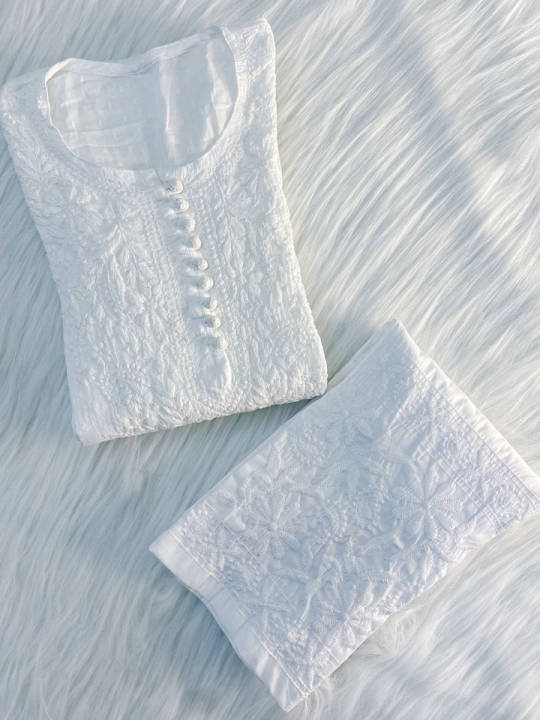
Bandhani Dupatta :
Hailing from the colorful state of Rajasthan, bandhani is a traditional tie-dye technique that results in mesmerizing patterns of dots and circles. A bandhani dupatta adds a pop of color and texture to any outfit, instantly elevating its visual appeal. Draped elegantly over the shoulders or wrapped around the neck, a bandhani dupatta is the epitome of ethnic chic.
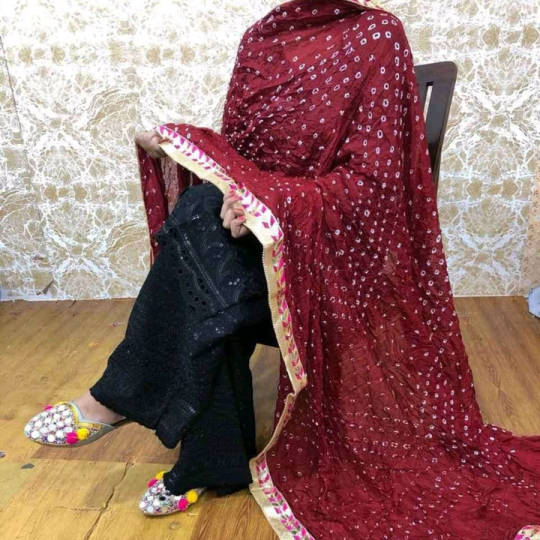
Georgette Sarees :
Known for its lightweight and flowy texture, georgette fabric is a popular choice for sarees. Whether adorned with intricate embroidery or subtle embellishments, georgette sarees exude grace and elegance. Perfect for special occasions such as weddings and festivals, these sarees drape beautifully and flatter all body types.
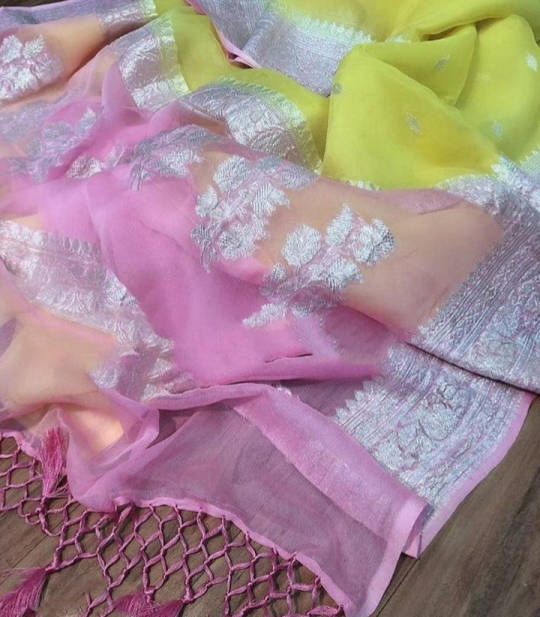
Conclusion:
In the realm of Indian ethnic wear, the combination of a white chikankari kurti, a bandhani dupatta, and georgette sarees represents the perfect fusion of tradition and contemporary style. Each element brings its own unique charm to the ensemble, creating a look that is both timeless and fashion-forward. Whether worn individually or together, these pieces are sure to make a statement and leave a lasting impression.
0 notes
Text

Enjoy the highest level of style with the carefully chosen Banarasi Silk Saree selection from Divya India. With our cutting-edge clothing, which combines both current and traditional styles. Book your order today at - divyaindia.in
#designer saree#saree for women#bengali saree#modern saree#phulkari dupatta#bandhani dupatta#banarasi dupatta#kalamkari dupatta#silk dupatta#patola dupatta
0 notes
Text

The Ultimate Guide to Dupatta Draping Styles for Women
Dupattas are an important part of Indian cultural clothing, serving both functional and decorative purposes. In this blog, we will look at many dupatta draping styles and techniques to help you raise your fashion game.
#dupatta#dupatta for women#phulkari dupatta#organza dupatta#bandhani dupatta#how to style dupatta with kurti#how to carry dupatta on suit#how to wear dupatta on lehenga#how to drape dupatta on suit#how to drape dupatta on lehenga#how to wear lehenga dupatta#sabezy
1 note
·
View note
Text
A brief Look at the evolution & Special Attributes of Bandhani Dupattas
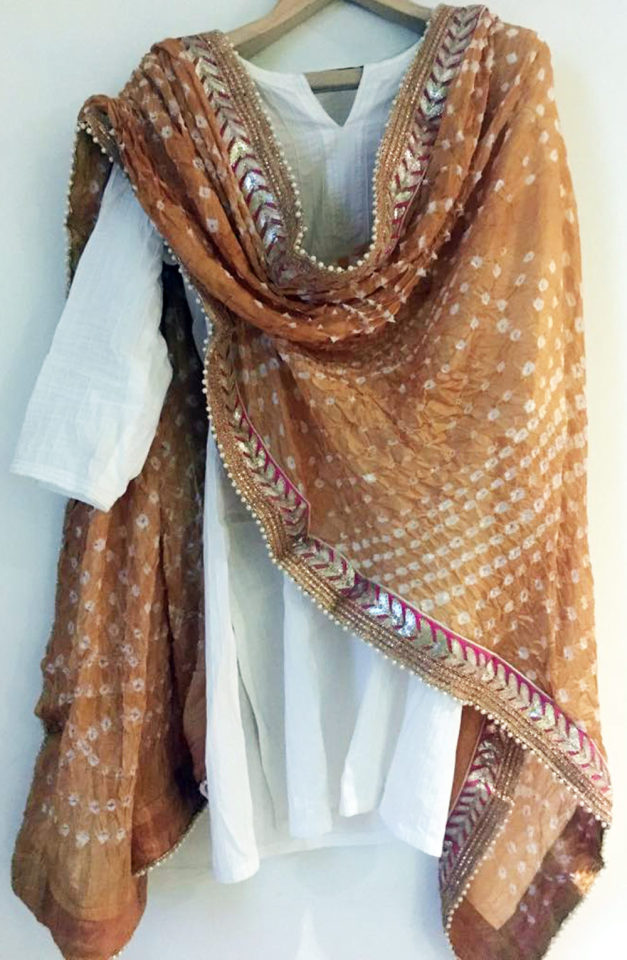
If you are a connoisseur of fine textiles, then you must have heard of the Bandhani Dupatta. Bandhani textiles have been crafted by artisans in India over the years. Bandhani patterns are used uniquely on Gaji silk and cotton among other fabrics.
Exclusive dupattas are trending choices for special occasions and weddings too. The vibrant dot prints are a testament to the country’s rich artistic legacy. Before you buy Bandhani Dupattas, it is important to trace the evolution and distinctive features of these marvels. This will give you an idea of how this art form originated and evolved over centuries in India. Read on for more.
Origins and Importance of Bandhani Dupattas
Before you buy a Bandhani Dupatta online, you should know a little about the origins of the celebrated art form. Here are some points worth noting in this regard:
Dyeing and Bandhani art were used from 4000 B.C. and in the Indus Valley Civilization.
The Ajanta Caves have Bandhani dots on their walls which may be traced all the way back to paintings that highlighted the life of Lord Buddha.
Bandhani may have also been used for royal weddings, as described in Harshacharita.
The word Bandh means tie or tying in Sanskrit. The craft originated from western India with the most famous examples of the artwork found in Rajasthan and Gujarat among other States. Punjab also has a rich tradition of Bandhani artwork that has flourished over several years. These are the three main Indian States where this art form has been kept alive by local artisans.
The Khatri community in Saurashtra and Kutch is known for its contribution towards keeping Bandhani art alive in India. They have played a significant role in upholding the relevance of this art form over several years.
As you can see, these Dupattas have a rich history of their own. They have also evolved over centuries in India. But how is a Bandhani Dupatta made? Here’s knowing more about the same below.
Making Bandhani Dupattas - How It Is Done
You will be pleasantly surprised when you know more about the artistry and skill that goes into making each Bandhani Dupatta. The tie and dye technique are used to make these Dupattas while Gaji silk is extensively used as the fabric. Here are the steps that are followed to make the same:
The cloth is tied in small knots with the fabric being plucked and tied with threads. They form tiny raised Bandhani structures. With precision, the knots must hold up the whole design. The fabric is then dyed with vibrant colours. The whole cloth is coloured with tied spots staying white or retaining the base colour that was present during tying. The knots are then untied and there is a special contrasting effect of dots or Bindis that can be observed in patterns over the fabric.
The artistry, precision, and skill involved in making each Dupatta are the key attributes that you should know about in this regard. These special prints are must-have choices for various events like weddings and other ceremonies. Here are some other aspects that you should know more about.
Knowing More about Bandhani Dupattas
Bandhani Dupattas and sarees are both popular throughout India. The artwork is implemented through the application of the base colour coat for dyeing and plucking the fabric with the fingernails to create various images into small bindings. These Dupattas can be easily paired with Kurtas in solid colours. Many women prefer wearing them with wedding ensembles and over Ghagras for covering their heads. They are worn for Diwali and other festivals in India. The Safa or Pagri form is also popular among Indian men on these occasions. They are Bandhani Dupattas tied around the head in diverse colours, representing an innovative use of the art form to stand out at such special events.
Some of the available options include silk blend Dupattas that come with chunky borders and multiple colours. You can also choose silk Dupattas in regal colours along with more casual options that use art silk. Traditional Rajasthani or Gujarati Dupattas are also available in colours like yellow, green, pink, and red. These are some choices that you can take a closer look at, while buying Bandhani Dupattas online. You should also buy from a trusted brand online, to ensure that you get an authentic Dupatta that stands out for its distinctive look and feel.
Conclusion
To conclude, it can be said that Bandhani Dupattas represent an ancient Indian form of artwork that has successfully evolved over the years. They are not only vibrant and sport distinct patterns but are also considered as auspicious options for weddings and other festive or religious ceremonies in India. The country is known for its prowess in terms of textile production and Bandhani artwork is one of many such successful examples in this regard. They remain popular and relevant even today.
Knowing more about the origin and attributes of these Dupattas will help you understand the sheer craftsmanship that goes into every piece. Take your time before buying and choose the right colours that go well with your preferred ensembles for special events. Here is to creating fabulous and unique looks for every occasion with stunning Bandhani Dupattas.
0 notes
Text
Bandhani in Bhujodi dupatta
Two Kutch crafts together in one dupatta, bhujodi handloom dupatta with hand knots bandhej in bhujodi dupatta. Unique and exclusive products of craftcentres. Limited stock, buy Bhujodi bandhani dupatta for summer its best for summer. Handloom and Hand knoted.
Art of bhujodi handloom
Hand knoted bandhej
Size - 40" X 100" Inches
Warp - cotton
Weft - cottom
Support handloom




0 notes
Text
Buy Designer Sarees Online | BaandishLooms – Weaving Tradition
Shop exquisite designer sarees online at BaandishLooms, where tradition meets style. Explore handcrafted weaves, elegant drapes, and timeless fashion today! Shop designer sarees online, trendy dresses, dupattas, western wear & women fashion accessories. Explore our stunning saree collection for every occasion!

#designer sarees online#dresses#dupattas#western wear#Women Fashion Accessories#saree collection#bridal sarees#sarees online#Bandhani Saree#Banarasi Silk Saree#Silk Saree
0 notes
Text
Elegant Bandhani Lagdi Patta Dupatta – Vastra Raag
Discover the beauty of traditional craftsmanship with the bandhani lagdi patta dupatta at Vastra Raag. Elevate your ethnic wear with this exquisite, vibrant accessory!
0 notes
Text
VastragRaag's Bandhani Lagdi Patta Dupattas: Traditional Elegance for Every Occasion
VastragRaag offers a stunning collection of Bandhani Lagdi Patta Dupattas, combining traditional craftsmanship with modern elegance. These dupattas are adorned with intricate Bandhani prints and finished with a golden Lagdi Patta, making them perfect for festive occasions, weddings, or casual wear. Known for its vibrant colors and delicate design, VastragRaag’s Bandhani Lagdi Patta Dupattas add a touch of heritage and sophistication to any outfit. Explore their exquisite collection today!
0 notes
Text
The Evolution of Lagdi Patta Bandhani Dupattas: From Royal Courts to Modern Wardrobes

Fashion is a reflection of culture, history, and tradition, and few textiles capture this essence better than Lagdi Patta Bandhani dupattas. These delicate, hand-tied and dyed wonders have traveled through centuries, evolving from the lavish courts of Rajasthan and Gujarat to contemporary fashion statements worn by women across the world. But how did this transformation happen? Let’s take a journey through time and explore how these timeless dupattas have remained relevant while adapting to changing trends.
A Royal Beginning
Bandhani, or tie-and-dye, is an ancient art that dates back over 5,000 years, finding its roots in regions that are now Rajasthan and Gujarat. The term "Bandhani" comes from the Sanskrit word ‘Bandh’, meaning ‘to tie.’ The craft involves meticulously tying tiny portions of fabric with thread before dyeing it to create mesmerizing patterns. Lagdi Patta, a specific variation of Bandhani, was once a symbol of prestige, reserved for the royals and aristocrats.
In the Mughal and Rajput courts, Lagdi Patta Bandhani dupattas were more than just accessories—they were statements of opulence. The intricate designs and use of fine silk and muslin made them a favorite among queens, princesses, and noblewomen. The dyes used were extracted from natural sources like indigo, turmeric, and madder, ensuring the colors remained rich and vibrant for years. These dupattas were often paired with heavily embroidered lehengas and ornate jewelry, making them an essential part of traditional ensembles.
The Shift to Everyday Elegance
While Bandhani was once restricted to royal families, over time, it became a part of mainstream fashion, especially during weddings and festive occasions. The craft spread beyond Rajasthan and Gujarat, making its way into the wardrobes of women from different communities across India. Skilled artisans passed their expertise down generations, keeping the tradition alive.
The introduction of cotton fabrics and machine-assisted techniques in later years made Lagdi Patta Bandhani more accessible and affordable. However, the true essence of this art still lies in its handcrafted versions. A single handmade Bandhani dupatta can take weeks or even months to complete, depending on the complexity of the design. Each dot or pattern is a testament to an artisan’s patience and skill.
Bandhani in the Modern Era
Today, Lagdi Patta Bandhani dupattas have undergone a stylish transformation. Designers are blending traditional tie-and-dye techniques with contemporary aesthetics to cater to modern tastes. Fusion wear has played a significant role in bringing Bandhani into everyday fashion—women now pair these dupattas with jeans, palazzos, and Indo-western outfits. The color palette has also expanded, with pastel shades, metallic hues, and ombré effects making their way into the market.
Even Bollywood has embraced Bandhani with open arms. From Deepika Padukone to Alia Bhatt, celebrities have been spotted donning Bandhani dupattas, further increasing their appeal. Social media has also played a major role in reviving interest in handcrafted textiles, making people appreciate the beauty of slow fashion.
A Tradition That Lives On
Despite the rise of fast fashion, Lagdi Patta Bandhani dupattas continue to hold their ground, representing a beautiful blend of heritage and innovation. They are more than just pieces of fabric—they tell stories of skilled artisans, of royal courts, and of a culture that values craftsmanship over mass production.
Owning a Bandhani dupatta is like owning a piece of history, a reminder that fashion is cyclical, yet timeless. Whether draped over a traditional lehenga or styled with a modern dress, this art form remains a symbol of elegance, grace, and tradition—a legacy that deserves to be cherished for generations to come.
0 notes
Text
Karwa Chauth, one of the most significant festivals in India, is a celebration that brings together the elements of love, devotion, and tradition. Celebrated by married women for the long life and well-being of their husbands, this festival has a rich cultural history and is observed with deep reverence, primarily in the northern parts of India. Apart from its religious significance, Karwa Chauth has also become synonymous with style and fashion, as women dress in their finest ethnic wear, embracing the beauty of traditional Indian attire.
#karva chauth 2024#karwa chauth dress for women#karwa chauth dress ideas#karwa chauth ethnic wear#karwa chauth festival#karwa chauth festival attire#karwa chauth kurta set#kurta pant dupatta set#kurta pant set with dupatta#ladies suit set online#latest ethnic sets#latest karwa chauth look#sharara sets for women#sharara suit for women#short suit sets for women#traditional wear for women#banarasi silk anarkali suit#banarasi silk jacquard salwar kameez#banarasi silk kurta set with dupatta#bandhani anarkali kurta set#bandhani kurta design#bandhani suit design#best lehenga for women#best suit sets for women#casual suits for ladies#cotton suit sets for women#crop top design with skirt#crop top with skirt and dupatta#crop top with skirt for girls#crop top with skirt for women
0 notes
Text
Buy White Chikankari Kurti, Bandhani Dupatta and Gota Patti Saree
Looking to add a touch of traditional elegance to your wardrobe? Look no further! In this blog post, we'll explore three timeless pieces that are essential for every ethnic fashion enthusiast: the white chikankari kurti, bandhani dupatta, and gota patti saree.
White Chikankari Kurti :
The white chikankari kurti is a classic choice for those who appreciate fine craftsmanship and understated beauty. Originating from the city of Lucknow, chikankari is a delicate and intricate form of embroidery that adds a touch of sophistication to any outfit. Pair your white chikankari kurti with colorful leggings or palazzos for a chic and effortless look.

Bandhani Dupatta :
Add a pop of color and vibrancy to your ensemble with a bandhani dupatta. Originating from the vibrant state of Rajasthan, bandhani is a traditional tie-dye technique that results in beautiful patterns and designs. Whether you're wearing a simple kurta or a heavily embellished outfit, a bandhani dupatta is the perfect accessory to elevate your look and add a touch of ethnic charm.
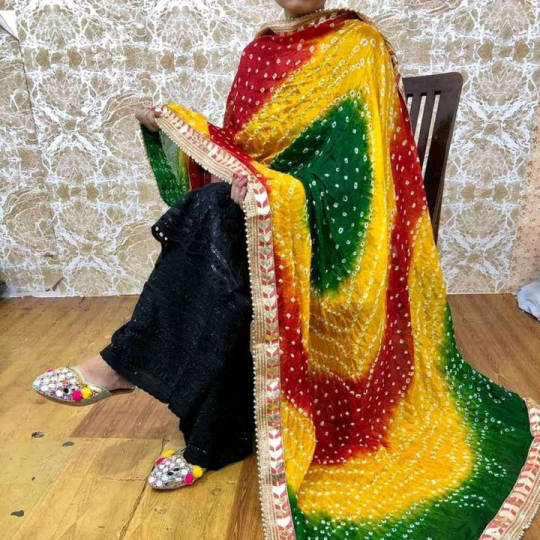
Gota Patti Saree :
No ethnic wardrobe is complete without a stunning gota patti saree. Originating from the state of Rajasthan, gota patti is a form of embroidery that involves the use of intricate gold or silver ribbon to create elaborate designs on fabric. A gota patti saree is perfect for weddings, festivals, or any special occasion where you want to make a statement and stand out from the crowd.
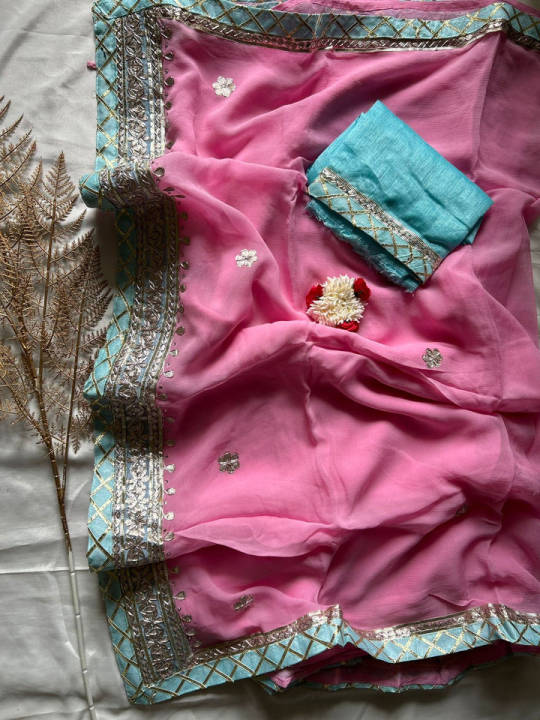
Conclusion :
Incorporating these timeless pieces into your ethnic wardrobe will not only add versatility and style but also celebrate the rich cultural heritage of India. Whether you opt for a white chikankari kurti, bandhani dupatta, or gota patti saree, you're sure to turn heads and make a lasting impression wherever you go. So why wait? Start shopping and elevate your ethnic wardrobe today!
0 notes
Text
What Makes a bandhari dupatta Special?

Bandhani dupattas are a timeless treasure in the world of ethnic fashion, known for their vibrant colors, unique patterns, and cultural significance. Originating from the Indian states of Gujarat and Rajasthan, Bandhani is a traditional tie-dye technique that has been cherished for centuries. But what exactly makes a Bandhani dupatta so special? Let’s dive into its rich history, intricate craftsmanship, and cultural importance to understand why these dupattas are must-haves in every ethnic wardrobe Read more...
0 notes
Text
Incorporating Handloom Stoles and Dupattas in Your Wardrobe
Handloom stoles and dupattas are not just accessories; they are pieces of art that can transform any outfit into a statement of elegance and heritage. At iTokri, we offer a diverse collection of exquisite handloom stoles and dupattas, each with its own unique story and craftsmanship. From the intricate Bandhani Tie-Dye Dupattas to the elegant Bengal Kantha Work Stoles, our collection celebrates the rich textile traditions of India.

Here’s how you can incorporate these beautiful pieces into your wardrobe and elevate your style.
Embracing Traditional Elegance
Ajrakh Block Prints Dupattas and Ajrakh Printed Stoles, known for their intricate patterns and rich colours, are a timeless addition to any wardrobe.

These pieces can be draped over a saree, paired with a salwar suit, or even worn with Western outfits for a fusion look. The traditional designs and natural dyes make them perfect for cultural events and formal gatherings.
Making a Statement with Handpainted Art
Kalamkari Hand Painted Dupattas and Kalamkari Block block-printed stoles showcase the beautiful art of hand painting and block printing. These pieces are ideal for making a bold statement.

Wear them with plain or lightly embellished outfits to let the intricate artwork take centre stage. They are perfect for special occasions and cultural celebrations.
Celebrating Regional Craftsmanship
Pochampally Ikat Dupattas from Telangana and Sambalpuri Ikat Handwoven Dupattas from Odisha are celebrated for their complex weaving techniques and vibrant patterns.

These dupattas can be paired with both traditional and modern outfits. They add a touch of sophistication and can be styled for formal events as well as casual outings.
Infusing Florals and Embroidery
Phulkari, meaning 'flower work,' is a traditional embroidery technique from Punjab. Hand Embroidered Phulkari Dupattas and Stoles are adorned with vibrant floral patterns that add a touch of elegance to any outfit. These pieces are perfect for weddings, festivals, and other celebratory events. Pair them with simple attire to let the embroidery shine.
Showcasing Artistic Prints
Sanganeri Printed Dupattas and Sanganeri Block Print Stoles from Rajasthan are known for their delicate floral patterns and vibrant colours.

These pieces are versatile and can be styled with a variety of outfits, from sarees to western dresses. They add a touch of grace and can be worn for both casual and formal occasions.
Adding Texture and Detail
Ajrakh Patchwork Stoles add texture and intricate detailing to your outfit. These pieces can be styled with simple, solid-coloured attire to highlight their unique patterns and craftsmanship. They are ideal for casual wear and can add a bohemian touch to your look.
Elevating Everyday Outfits
Bengal Kantha Work Stoles and Bengal Jamdani Stoles are known for their fine embroidery and weaving techniques. These stoles can elevate everyday outfits with their subtle elegance and intricate designs. Pair them with casual attire for a refined look or wear them with traditional outfits for a touch of sophistication.
Handloom stoles and dupattas from iTokri are more than just accessories; they are expressions of rich cultural heritage and skilled craftsmanship. Whether you are looking to add a pop of colour, embrace traditional elegance, or make a bold statement, our collection has something for every style and occasion.
#Bandhani Tie-Dye Dupattas#Ajrakh Block Prints Dupattas#Kalamkari Block block-printed stoles#Pochampally Ikat Dupattas#Sanganeri Block Print Stoles from Rajasthan#Ajrakh Patchwork Stoles
0 notes